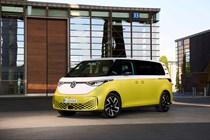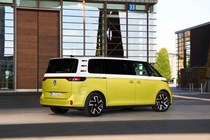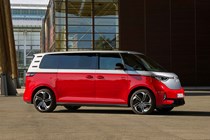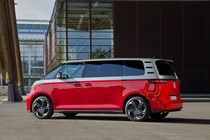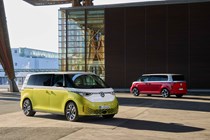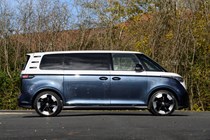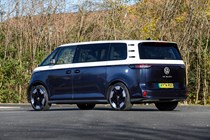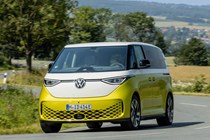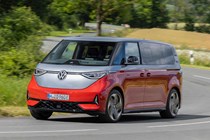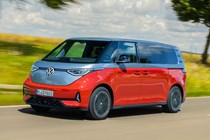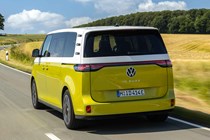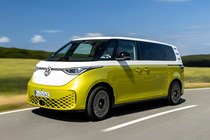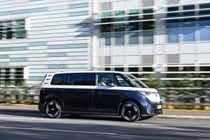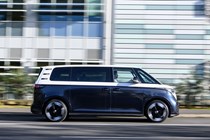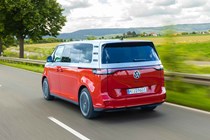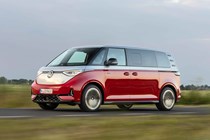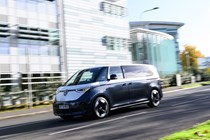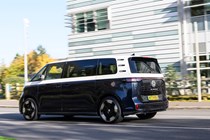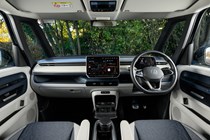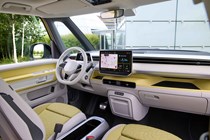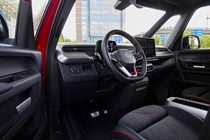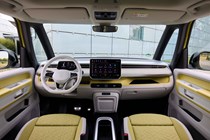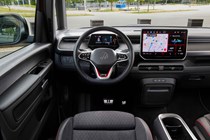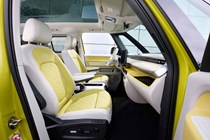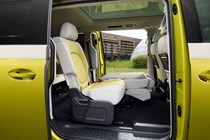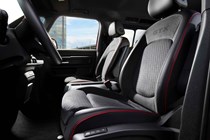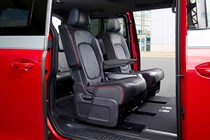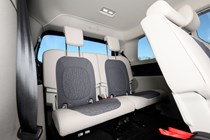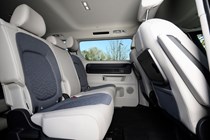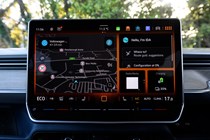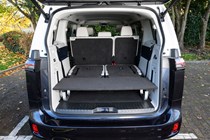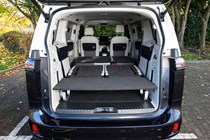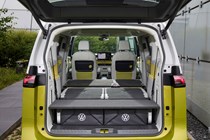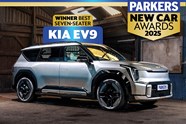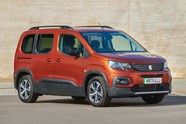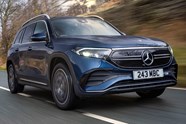
Volkswagen ID. Buzz review
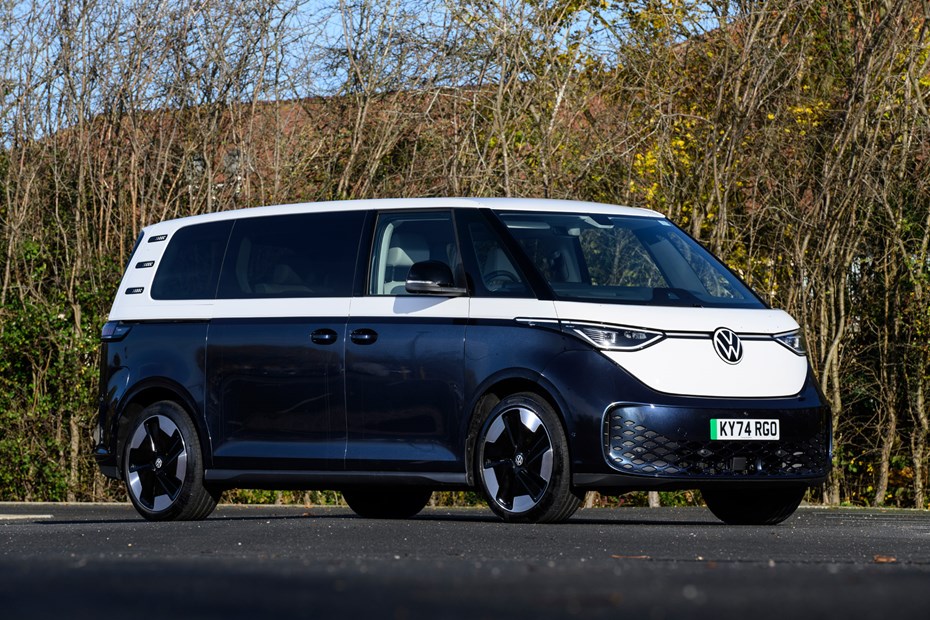
At a glance
| Price new | £59,135 - £68,960 |
|---|---|
| Used prices | £30,518 - £58,300 |
| Road tax cost | £620 |
| Insurance group | 31 - 42 |
Get an insurance quote with

|
|
| Fuel economy | 2.9 - 3.2 miles/kWh |
| Range | 250 - 293 miles |
| Miles per pound | 4.6 - 9.4 |
| Number of doors | 5 |
| View full specs for a specific version | |
Available fuel types
Fully electric
Pros & cons
- Doesn’t feel like a van to drive
- Desirable looks, attractive cabin
- Room for seven adults with ease in LWB model
- Poor touch-led interior controls
- Sporty GTX feels rather pointless
- It certainly isn’t cheap to buy
Volkswagen ID. Buzz MPV rivals
Overview
The Volkswagen ID. Buzz is one of the coolest electric cars to have launched in recent years. It brings back the retro charm of the original Volkswagen Microbus and its bright upholstery finishes and extensive range of equipment make it a rather desirable proposition. Few cars turn as many heads on the road.
But creating a standalone MPV is quite a bold move from Volkswagen. Most of the company’s rivals have abandoned the segment altogether and have steadily moved their customers into either converted panel vans (yes, there’s also a Cargo version of the Buzz – but the MPV came first) or more fashionable seven-seat SUVs. So, the Buzz might be aimed at a market that no longer exists.
To keep the Buzz competitive with its trendier SUV-shaped rivals, Volkswagen has launched an updated model for 2024. It now has a fresh 12.9-inch infotainment system, a pair of larger battery packs, a new entry-level powertrain (with 286hp) and a long overdue extended wheelbase model that adds the option of six or seven seats – the latter being especially useful for larger families.
Volkswagen has also launched a sporty new GTX variant as part of the update, which gives the Buzz a more aggressive body kit, a more potent 340hp all-wheel-drive powertrain and a more purposeful Alcantara-lined interior. But, as we’ll explain in this review, we’re not convinced it’s worth the extra cash.
All ID. Buzz models are based on the Volkswagen Group’s dedicated electric car platform. The architecture is called MEB – and it’s the same technology that underpins the ID.3, ID.4 and ID.5. That means the Buzz feels remarkably car-like to drive, despite its van-like appearance.
But is something that is – as one member of the Parkers team put it – effectively an ID.4 wearing the box it came in really worth nearly twice as much as a Citroen e-Berlingo or Peugeot e-Rifter?
In this review, we’ll walk you through all the pros and cons of ID. Buzz ownership. We’ll discuss the car’s practicality, interior quality, comfort, driving experience and running costs before offering our final verdict. We’ve even conducted a long-term test of the Buzz, so you can find out what it’s like to live with as a family car. If you’d like to learn more about how we reached our decision on the Buzz, check out our how we test cars explainer page.



